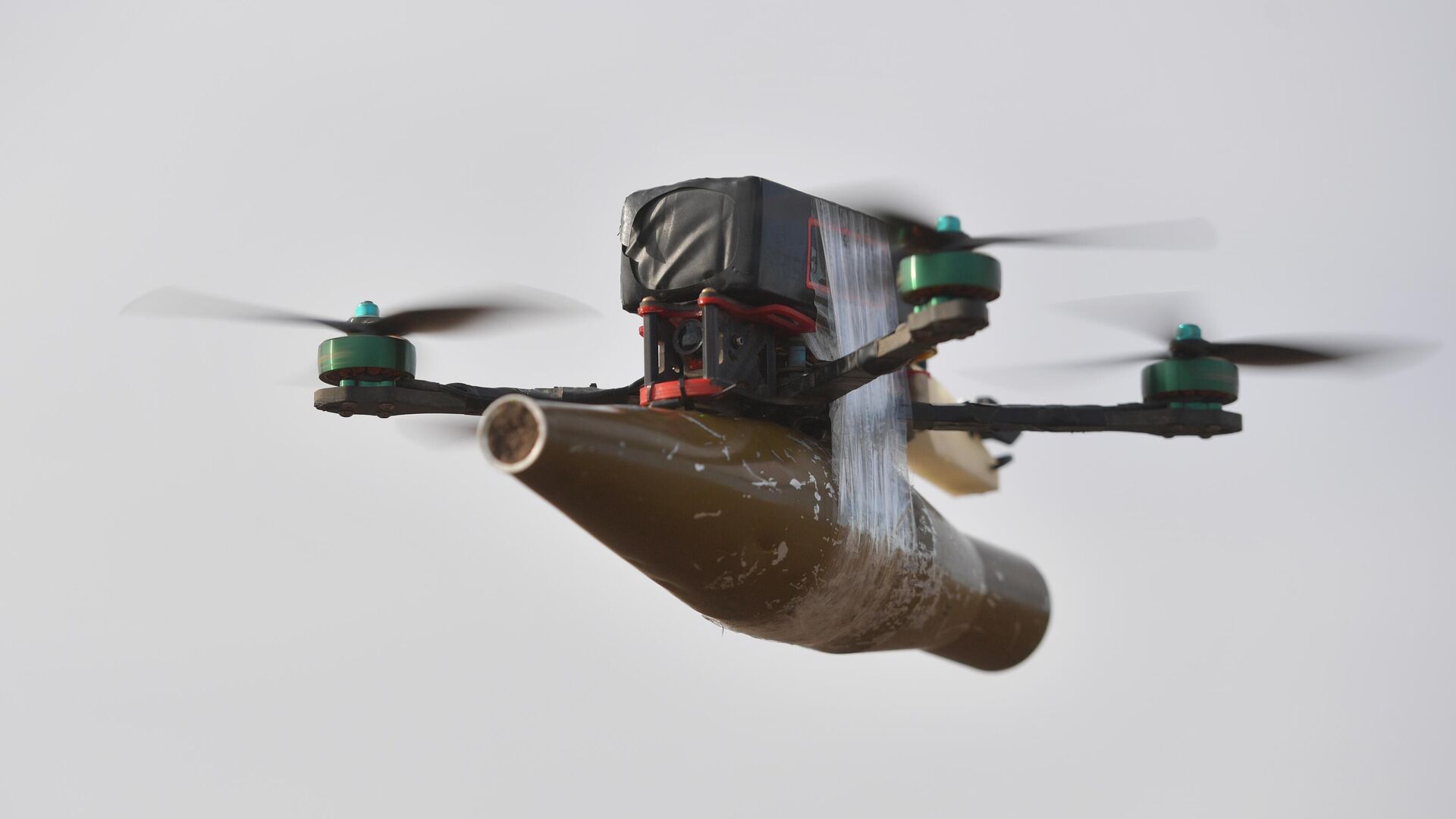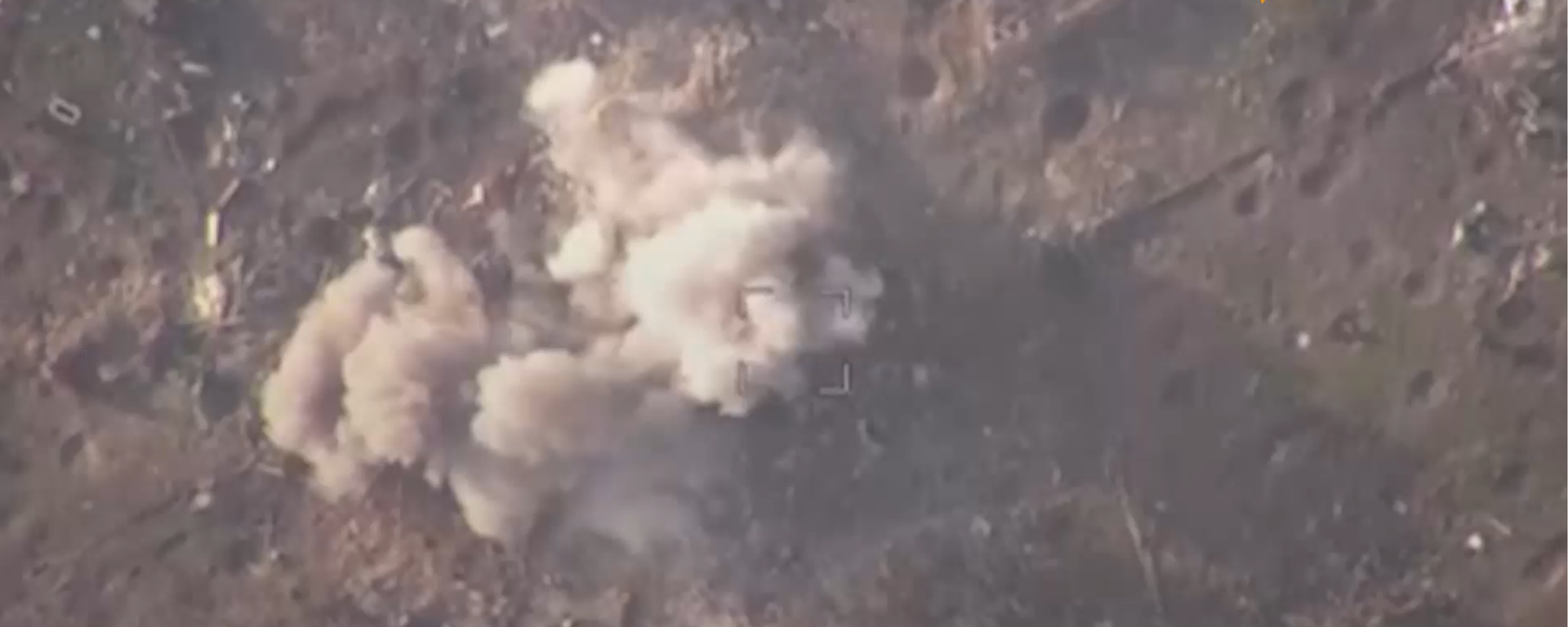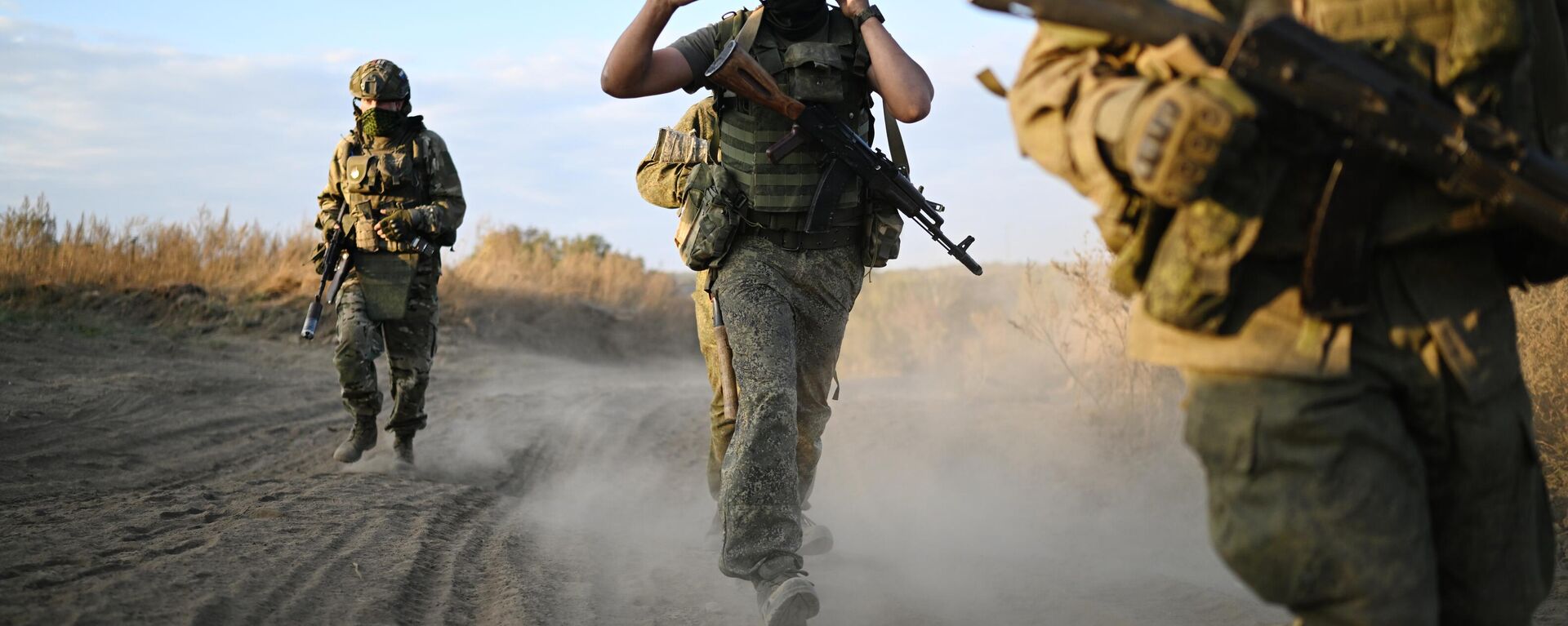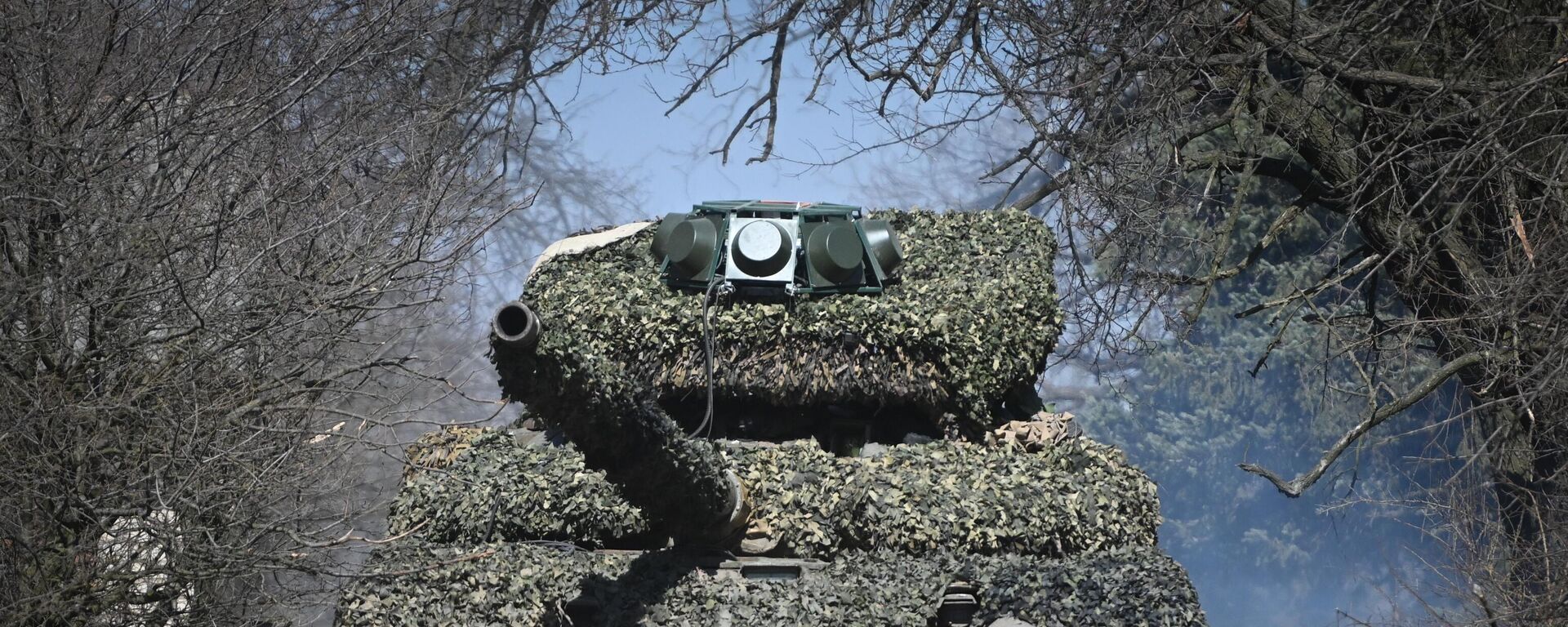https://sputnikglobe.com/20240601/like-wwi-ukraine-conflict-is-reshaping-war-for-the-21st-century-1118727144.html
Like WWI, Ukraine Conflict Is Reshaping War For the 21st Century
Like WWI, Ukraine Conflict Is Reshaping War For the 21st Century
Sputnik International
The conflict in Ukraine is reshaping warfare in the 21st century, and just like WWI, it will be the generals who can adapt who will find success.
2024-06-01T02:44+0000
2024-06-01T02:44+0000
2024-06-01T02:44+0000
analysis
mark sleboda
scott ritter
military & intelligence
ukraine
russia
china
nato
high mobility artillery rocket system (himars)
wwi
https://cdn1.img.sputnikglobe.com/img/07e8/04/1b/1118143996_0:130:3180:1919_1920x0_80_0_0_0276d1c5f414e20d49ed3e24ce5bbe8f.jpg
Regardless, Field Marshal Sir Douglas Haig, chief of staff of the British Expeditionary Force and the architect of the battle decided to soldier on, losing an additional 400,000 troops in four months until winter came and mercifully halted the fighting.The Battle of Somme ended inconclusively and is considered one of the greatest tragedies of the First World War for the British army. Haig appeared to be a qualified general when he took the post, but as the saying goes, generals are always fighting the last war and few personified that more than Haig.Trained in outdated military doctrine that had already been discredited in the Civil War and again in the Russo-Japanese War. Haig ordered frontal assaults, and not even the kind that were typical (though largely unsuccessful) during the early stages of the Great War. Haig preferred the kind that came out of the Napoleonic era. The general ordered his men to assault the brunt of the German defense using slow-moving, orderly lines, which he saw as easier to command. He planned to send in the cavalry– which often played major roles in Haig’s plans despite their ineffectiveness in modern war– after his infantry broke the German lines.Time and time again, Haig ordered his cavalry to suit up in anticipation of the coming breakthrough, only to order them to stand down when it failed to come and his infantry divisions were bleeding out in no man’s land between the defensive lines.Haig was not the only general to look silly during WWI, but his refusal to learn was among the worst. What Somme and many other battles in WWI proved was that the old way of fighting had come and gone. The weapons had changed the battlefield and armies had to adjust their tactics or face ruin.The weapons that shaped warfare in the 20th century: barbed wire, machine guns, tanks, long-range artillery, and battleships, still play significant roles on the battlefield in the 21st, but they are dwarfed in importance by one invention, from which multiple theaters have been affected: the drone.While specific numbers of their effectiveness are difficult to come by at this stage of the conflict (that will be a job for war historians) there is no doubt that it is the most significant innovation on the battlefield today, used by both sides to inflict large amounts of casualties on the other.During Ukraine’s failed 2023 counteroffensive, drones played a huge role in stopping that advance. With the possible exception of Russia’s distance mining equipment, which also took out large numbers of tanks, drones were pivotal in taking out NATO’s most powerful armor.“But it is an evolution of warfare that is occurring before our eyes. So, the Chinese and Americans are certainly paying very close attention,” he noted earlier in the interview.It is an opinion shared by former Marine and UN Weapons Inspector Scott Ritter. Speaking on the Danny Haiphong show, he explained how everything from tactics to logistics has been changed by drones.“When this war started, people were working off of Cold War-era doctrinal thinking. That is: you have tank columns, you have artillery that operates in battery or battalion sized formations flooding a zone, you have big arrow movements and things of that nature,” Ritter recalled. “[Then] drones started coming in, not just for targeting purposes, not just for deep strike purposes, but tactical drones on the battlefront. These FPV drones are a nightmare for soldiers.”Much like Haig, this was a lesson that the Armed Forces of Ukraine failed to learn during their counteroffensive. Rabotino was intended to be the first minor step during that offensive that would lead to Tokmak which would serve as the staging ground for an assault on Melitopol.But as armor assault after armor assault was destroyed, it became apparent that the Ukrainians would never reach their goal. But, Ukrainian President Volodymyr Zelensky needed something to show his Western benefactors, so Rabotino became the goal. It took 71 days to capture the tiny village with a pre-war population of about 500 people, largely using the same tactics they began with. Ukraine lost dozens of expensive tanks and thousands of men capturing and then holding the village. The Ukrainian offensive never went any further and in May, Russia recaptured the village.Just as the invention of the tank helped break the stalemate of the First World War, new technologies are emerging to counteract the drone and there it seems Russia has a decided advantage on that front. According to Military Watch Magazine, Russian electronic defenses have rendered Ukraine’s best artillery weapons all but useless, including the Excalibur GPS-guided artillery shells, the vaunted HIMARS rocket artillery systems and the JDAM precision-guided bombs.But the innovations on the battlefield aren’t exclusive to high technology, often they come from the soldiers on the ground. As tanks were increasingly taken out by drones, soldiers started adding cope cages in an attempt to protect them. This eventually led to the deployment of what is affectionately called the “turtle tank.”Typically beginning with a T-72 tank, so-called turtle tanks are outfitted with a metal shell that covers almost the entirety of the tank, leaving only the very front and its cannon exposed to drone attack. While limiting the driver in visibility and maneuverability, those drawbacks have proven worth it. The Ukrainians who initially laughed at the turtle tank’s awkward appearance and low-tech solution quickly stopped laughing as they retreated from turtle tank assaults across the Western front.As Sleboda noted, Ukraine didn’t even bother trying to outfit the Abrams with anti-drone measures. “They couldn’t. They’re much too arrogant,” to put a cope cage on an Abrams, he said.The innovations on the battlefield in the Ukraine war are undoubtedly going to shape the next war and the war after that. China has made clear that it is paying attention and it wants the US to know that as well. In January they released a video showing how their drone swarms would work in concept against naval fleets.China also claims to have a new “anti-drone” tank, which includes electronic warfare equipment and anti-air measures designed to counteract drones and slow-moving guided missiles. They have also shown off very advanced maritime and underwater drones.In WWI, the generals who failed to learn from the lessons of the Civil War and the Russo-Japanese War suffered the consequences on the battlefield. Russia learned its lessons already. Ukraine did not and we see the results of that. China seems to be paying close attention and appears to be adjusting its priorities accordingly. The United States pioneered drone warfare in the 2000s, but as evidenced by the number of MQ-9 Reapers taken down by the Houthis in Yemen, those are no longer effective. Will the lumbering behemoth of NATO be able to adjust as quickly as Russia and China, or will they, like Haig, be stuck fighting with the tactics and equipment of the last century?“The tensions are increasing right now across the Taiwanese straits. We're in [with Ukraine] one of the early stages of a conflict that in the future will be regarded as part of a series of conflicts that are [a part of] World War 3,” Sleboda warned.
https://sputnikglobe.com/20240511/watch-zala-drones-thwart-ukrainian-attempt-to-cross-dnepr-river-1118383808.html
https://sputnikglobe.com/20240515/russian-forces-completely-liberate-rabotino-village-in-zaporozhye-region-1118444826.html
https://sputnikglobe.com/20240424/redefining-speed-russian-turtle-tanks-adapt-to-realities-of-modern-warfare-1118087517.html
ukraine
russia
china
Sputnik International
feedback@sputniknews.com
+74956456601
MIA „Rossiya Segodnya“
2024
News
en_EN
Sputnik International
feedback@sputniknews.com
+74956456601
MIA „Rossiya Segodnya“
Sputnik International
feedback@sputniknews.com
+74956456601
MIA „Rossiya Segodnya“
drone warfare, war technology, technological advances on the battlefield, turtle tank, fpv drone attacks, ukraine war updates
drone warfare, war technology, technological advances on the battlefield, turtle tank, fpv drone attacks, ukraine war updates
Like WWI, Ukraine Conflict Is Reshaping War For the 21st Century
On July 1, 1916, 110,000 British infantry left their trenches at the Battle of Somme. Within hours, 60,000 of them were killed or injured and the army had achieved none of its goals.
Regardless, Field Marshal Sir Douglas Haig, chief of staff of the British Expeditionary Force and the architect of the battle decided to soldier on, losing an additional 400,000 troops in four months until winter came and mercifully halted the fighting.
The Battle of Somme ended inconclusively and is considered one of the greatest tragedies of the First World War for the British army. Haig appeared to be a qualified general when he took the post, but as the saying goes, generals are always fighting the last war and few personified that more than Haig.
Trained in outdated military doctrine that had already been discredited in the Civil War and again in the Russo-Japanese War. Haig ordered frontal assaults, and not even the kind that were typical (though largely unsuccessful) during the early stages of the Great War. Haig preferred the kind that came out of the Napoleonic era. The general ordered his men to assault the brunt of the German defense using slow-moving, orderly lines, which he saw as easier to command. He planned to send in the cavalry– which often played major roles in Haig’s plans despite their ineffectiveness in modern war– after his infantry broke the German lines.
Time and time again, Haig ordered his cavalry to suit up in anticipation of the coming breakthrough, only to order them to stand down when it failed to come and his infantry divisions were bleeding out in no man’s land between the defensive lines.
Haig was not the only general to look silly during WWI, but his refusal to learn was among the worst. What Somme and many other battles in WWI proved was that the old way of fighting had come and gone. The weapons had changed the battlefield and armies had to adjust their tactics or face ruin.
The weapons that shaped warfare in the 20th century: barbed wire, machine guns, tanks, long-range artillery, and battleships, still play significant roles on the battlefield in the 21st, but they are dwarfed in importance by one invention, from which multiple theaters have been affected: the drone.
While specific numbers of their effectiveness are difficult to come by at this stage of the conflict (that will be a job for war historians) there is no doubt that it is the most significant innovation on the battlefield today, used by both sides to inflict large amounts of casualties on the other.
During Ukraine’s failed 2023 counteroffensive, drones played a huge role in stopping that advance. With the possible exception of Russia’s distance mining equipment, which also took out large numbers of tanks, drones were pivotal in taking out NATO’s most powerful armor.
“[US media] admitted how useless the Abrams [tank] is when tens of millions of dollars per tank can be taken out by a $500 drone. It is a new model of warfare,” Mark Sleboda, a security and international relations expert told Sputnik’s Fault Lines on Friday.
“But it is an evolution of warfare that is occurring before our eyes. So, the Chinese and Americans are certainly paying very close attention,” he noted earlier in the interview.
It is an opinion shared by former Marine and UN Weapons Inspector Scott Ritter. Speaking on the
Danny Haiphong show, he explained how everything from tactics to logistics has been changed by drones.
“When this war started, people were working off of Cold War-era doctrinal thinking. That is: you have tank columns, you have artillery that operates in battery or battalion sized formations flooding a zone, you have big arrow movements and things of that nature,” Ritter recalled. “[Then] drones started coming in, not just for targeting purposes, not just for deep strike purposes, but tactical drones on the battlefront. These FPV drones are a nightmare for soldiers.”
“If I tried to take Marines into combat using the tactics that I was taught,” Ritter continued “[With] two platoons online, basic fire etcetera, my base of fire would disappear because it’d be swarmed by FPV drones… then my Marines attacking would be hit by these drones and they’re all dead.”
Much like Haig, this was a lesson that the Armed Forces of Ukraine
failed to learn during their counteroffensive. Rabotino was intended to be the first minor step during that offensive that would lead to Tokmak which would serve as the staging ground for an assault on Melitopol.
But as armor assault after armor assault was destroyed, it became apparent that the Ukrainians would never reach their goal. But, Ukrainian President Volodymyr Zelensky needed something to show his Western benefactors, so Rabotino became the goal. It took 71 days to capture the tiny village with a pre-war population of about 500 people, largely using the same tactics they began with. Ukraine lost dozens of expensive tanks and thousands of men capturing and then holding the village. The Ukrainian offensive never went any further and in
May, Russia recaptured the village.
Just as the invention of the tank helped break the stalemate of the First World War, new technologies are emerging to counteract the drone and there it seems Russia has a decided advantage on that front. According to Military Watch Magazine,
Russian electronic defenses have
rendered Ukraine’s best artillery weapons all but useless, including the Excalibur GPS-guided artillery shells, the vaunted HIMARS rocket artillery systems and the JDAM precision-guided bombs.
“Everything ended [in 2023]: the Russian deployed electronic warfare, disabled satellite signals, and HIMARS became completely ineffective,” one senior Ukrainian military official was quoted as saying.
But the innovations on the battlefield aren’t exclusive to high technology, often they come from the soldiers on the ground. As tanks were increasingly taken out by drones, soldiers started adding cope cages in an attempt to protect them. This eventually led to the deployment of what is affectionately called the “
turtle tank.”
Typically beginning with a T-72 tank, so-called turtle tanks are outfitted with a metal shell that covers almost the entirety of the tank, leaving only the very front and its cannon exposed to drone attack. While limiting the driver in visibility and maneuverability, those drawbacks have proven worth it. The Ukrainians who initially laughed at the turtle tank’s awkward appearance and low-tech solution quickly stopped laughing as they retreated from turtle tank assaults across the Western front.
As Sleboda noted, Ukraine didn’t even bother trying to outfit the Abrams with anti-drone measures. “They couldn’t. They’re much too arrogant,” to put a cope cage on an Abrams, he said.
The innovations on the battlefield in the Ukraine war are undoubtedly going to shape the next war and the war after that. China has made clear that it is paying attention and it wants the US to know that as well. In January they released a video showing how their drone swarms would work in concept against naval fleets.
China
also claims to have a new
“anti-drone” tank, which includes electronic warfare equipment and anti-air measures designed to counteract drones and slow-moving guided missiles. They have also shown off very advanced maritime and underwater drones.
In WWI, the generals who failed to learn from the lessons of the Civil War and the Russo-Japanese War suffered the consequences on the battlefield. Russia learned its lessons already. Ukraine did not and we see the results of that. China seems to be paying close attention and appears to be adjusting its priorities accordingly. The United States pioneered drone warfare in the 2000s, but as evidenced by the number of
MQ-9 Reapers taken down by the Houthis in Yemen, those are no longer effective. Will the lumbering behemoth of NATO be able to adjust as quickly as Russia and China, or will they, like Haig, be stuck fighting with the tactics and equipment of the last century?
“The tensions are increasing right now across the Taiwanese straits. We're in [with Ukraine] one of the early stages of a conflict that in the future will be regarded as part of a series of conflicts that are [a part of] World War 3,” Sleboda warned.





